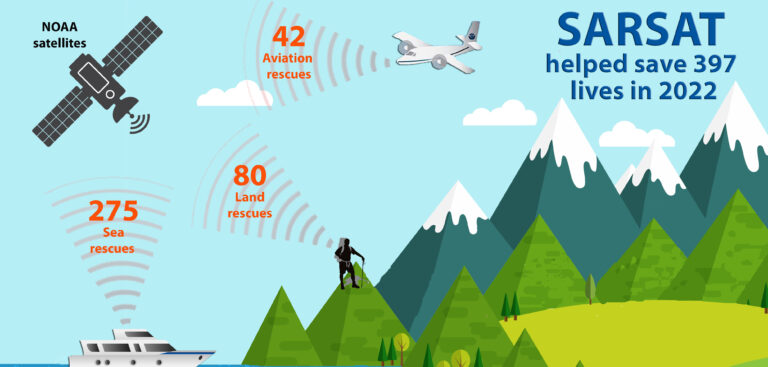Meteorological satellites used by the US National Oceanic and Atmospheric Administration (NOAA) helped rescue 397 people from potentially life-threatening situations in 2022.
NOAA’s polar-orbiting and geostationary satellites are part of the global Search and Rescue Satellite Aided Tracking (COSPAS-SARSAT) system, which uses a network of US and international spacecraft to detect and locate distress signals sent from emergency beacons on aircraft, boats and handheld personal locator beacons (PLBs) anywhere in the world.
Of the 397 US rescues last year, 275 were water rescues, 42 were from downed aircraft and 80 were on land involving PLBs. Florida had the most SARSAT rescues with 106, followed by Alaska with 56 and Utah with 20.
Since its start in 1982, COSPAS-SARSAT has been credited with supporting more than 50,000 rescues worldwide, including more than 10,100 in the US and its surrounding waters.
When an NOAA satellite pinpoints the location of a distress signal in the US, the information is relayed to the SARSAT Mission Control Center at NOAA’s Satellite Operations Facility in Suitland, Maryland. From there, the information is sent quickly to Rescue Coordination Centers, operated by the US Air Force for land rescues and the US Coast Guard for water rescues. NOAA also supports rescues globally by relaying distress signal information to international SARSAT partners.
Steve Volz, assistant administrator for NOAA’s Satellite and Information Service, said, “The value of NOAA satellites goes well beyond forecasting. The life-saving ability of SARSAT is a credit to the teamwork with the US Coast Guard, the US Air Force, NASA and our international partners.
“In keeping with its mission, the SARSAT program truly takes the ‘search’ out of search and rescue.”



